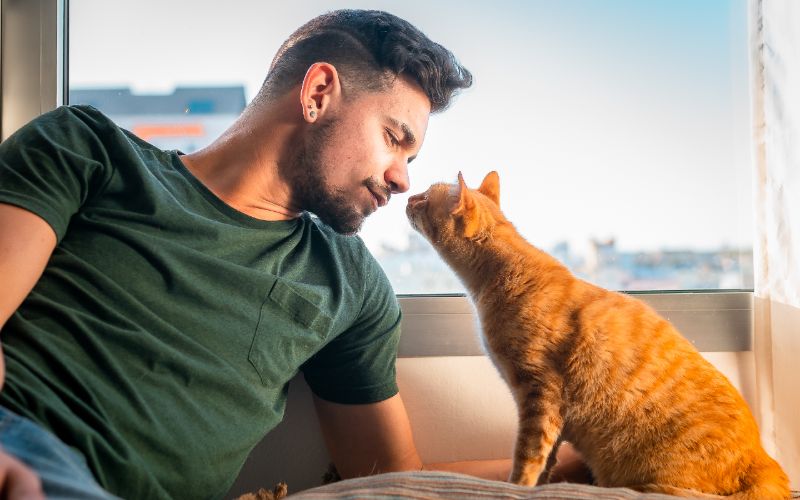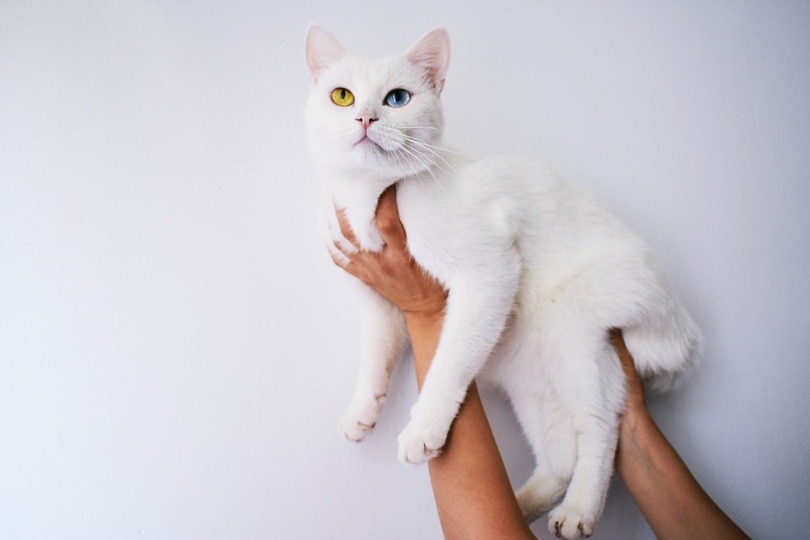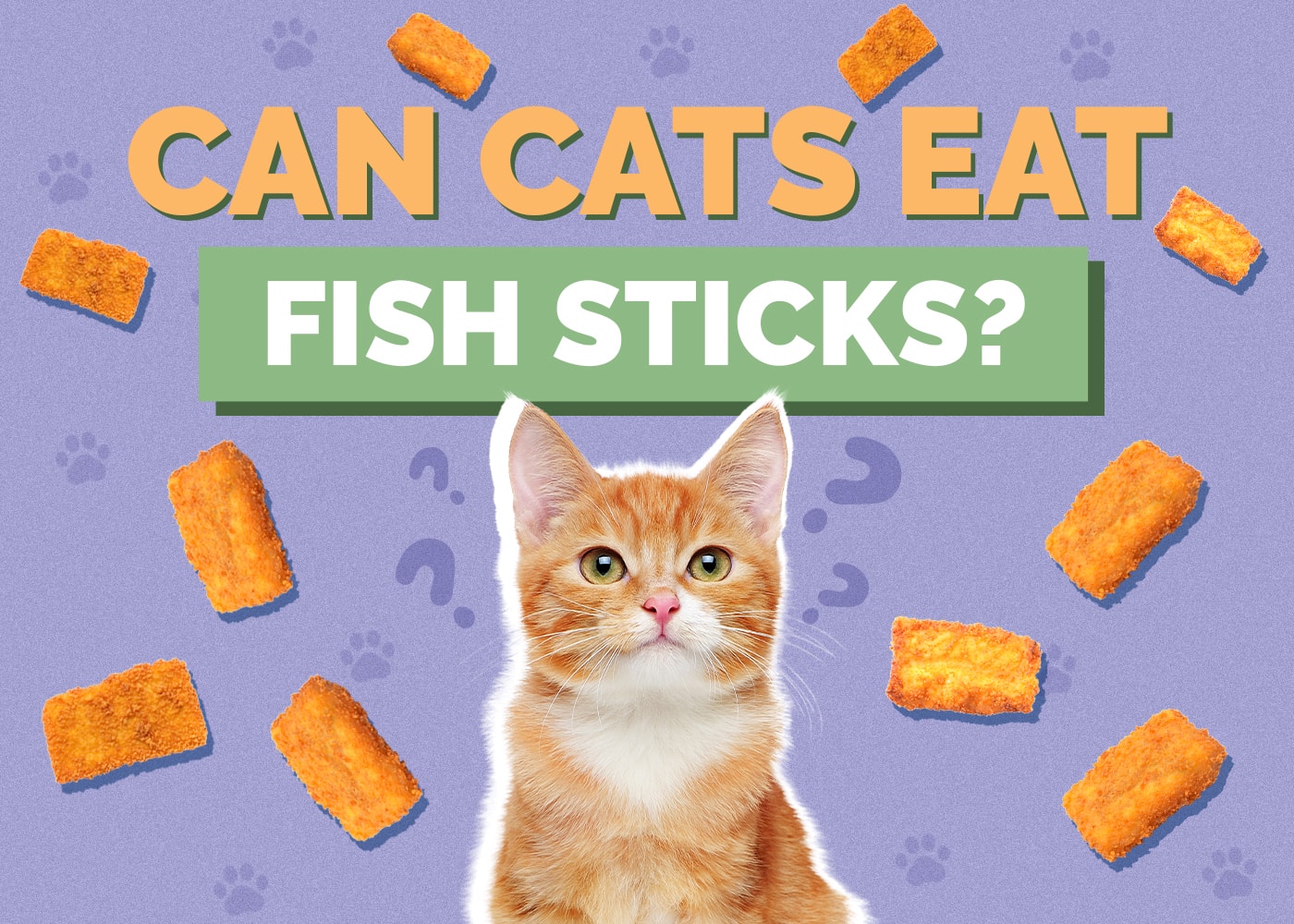Can Cats Eat Dragonflies? Nutritional Facts & Safety Guide

Updated on
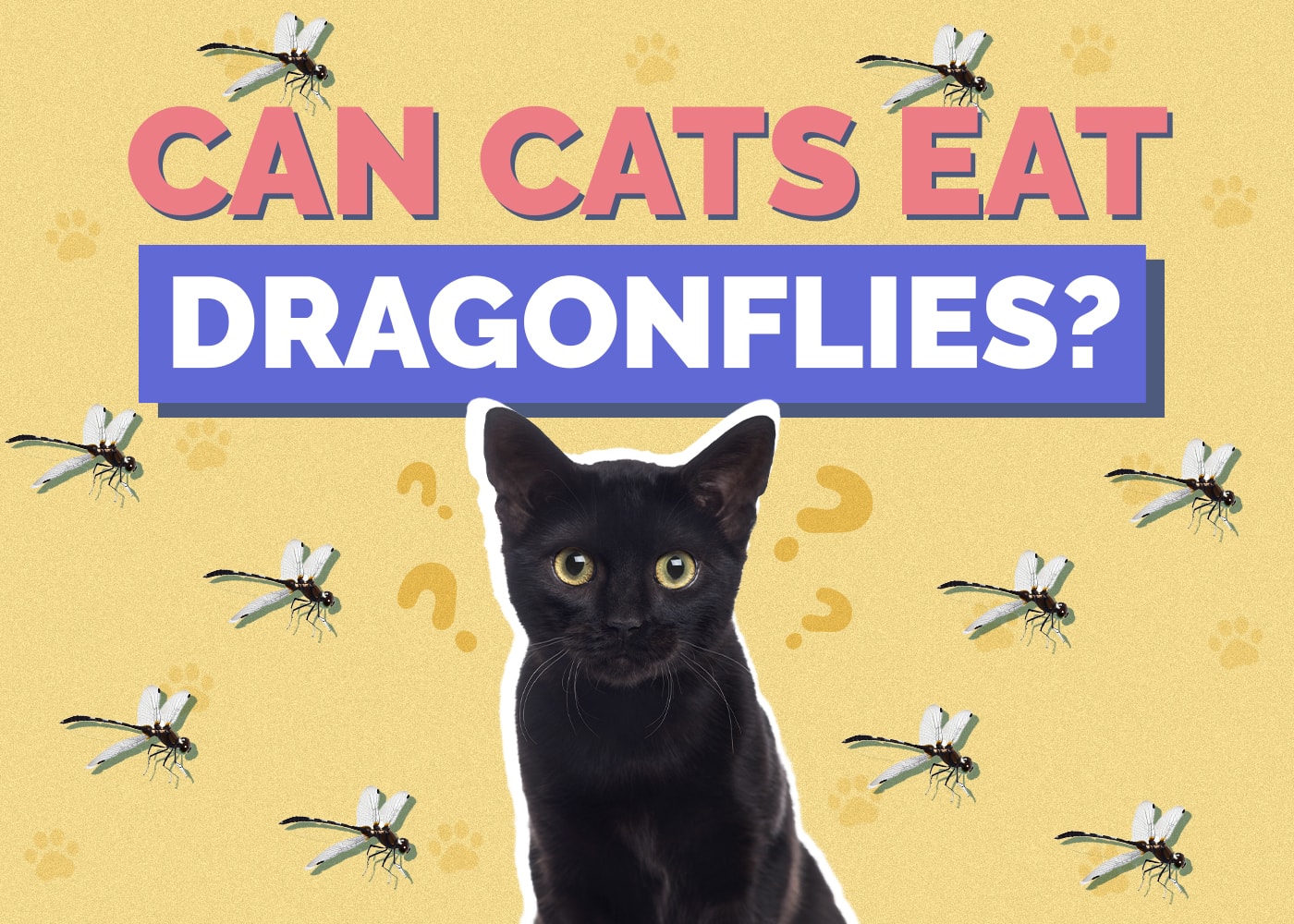
Dragonflies are agile, quick, and covered in pretty colors. All these things make them an enticing sight to even the laziest of felines, and it’s no surprise our cats love to chase them. Unfortunately, this game of tag often ends up with the dragonfly being eaten by our favorite feline.
The sight of our cat eating bugs, of any kind, is worthy of a cringe or two. But these beautiful insects aren’t toxic to cats and your feline can eat them with no ill effects. However, dragonflies, particularly the larger ones, can cause a few concerns.
To help ease your mind about your cat eating dragonflies or other insects, we’ve put together this guide to answer your questions.
Can Cats Eat Dragonflies?
Long story short, yes, cats can eat dragonflies. Unlike human food, there isn’t much risk involved in your cat eating dragonflies, either. In fact, the challenge posed by these insects to your cat’s hunting instincts gives your cat plenty of mental exercise, along with the physical benefits from the chase.
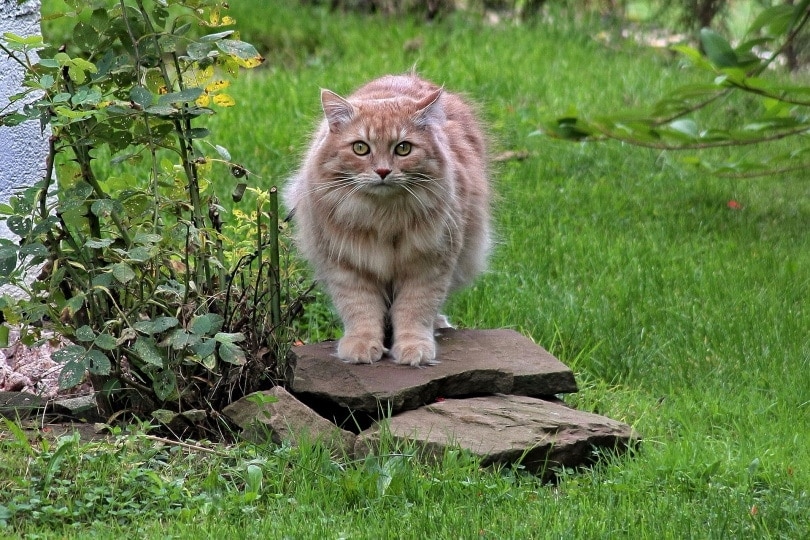
Why Do Cats Chase Insects?
Our cat’s desire to chase all manner of bugs might be amusing to us, but it comes with a certain amount of disbelief. Why do our furry friends like chasing these icky creatures so much? The thing you have to remember is that our cats are hunters. They always have been and always will be. Even your indoor kitty loves to practice their hunting skills.
While many people think insects are creepy and should stay as far away as possible, our cats are drawn to their fast, irregular movements. They pose a tempting challenge too. As insects—dragonflies, in particular—dart here and there, your cat has to outsmart them to win their prize.
It takes cunning, speed, and more than a few high jumps. If your cat wins, they earn a tasty snack and get to show off their hunting prowess. Insects are also accessible for house-bound cats. Although it annoys us when a fly buzzes in through an open doorway, your cat will be riveted by the darting movements and the glimmer of light on the fly’s wings.
For this reason, many cat toys are designed to appeal to these natural urges. They’re brightly colored or sparkle when they catch the light to capture your cat’s attention. Some even mimic the movements of bugs for a more interesting game.

What are the Risks of Cats Eating Dragonflies?
As stated previously, there aren’t many threats posed by dragonflies. They’re not poisonous and they don’t have a stinger to hurt your cat with, making them a much easier and safer insect for your feline to eat. Dragonflies do have teeth and can bite to protect themselves but they’re not strong enough to break the skin or cause damage to you or your cat—or your dog if you have a dragonfly-loving hound.
They can also carry parasites, but generally, there isn’t much risk to your curious feline. If it does affect your cat, it usually results in stomach upsets like vomiting or diarrhea. These symptoms usually go away within a few days but if they don’t, talk to your veterinarian to make sure everything is okay with your cat.
The possibility of pesticides can also be worrying for cat parents but, again, the insects your cat eats don’t carry a lot of the toxin themselves. It’s a different matter if your cat comes into direct contact with the pesticide, but eating a poisoned insect won’t cause them too much harm unless they eat hundreds of them in one sitting.
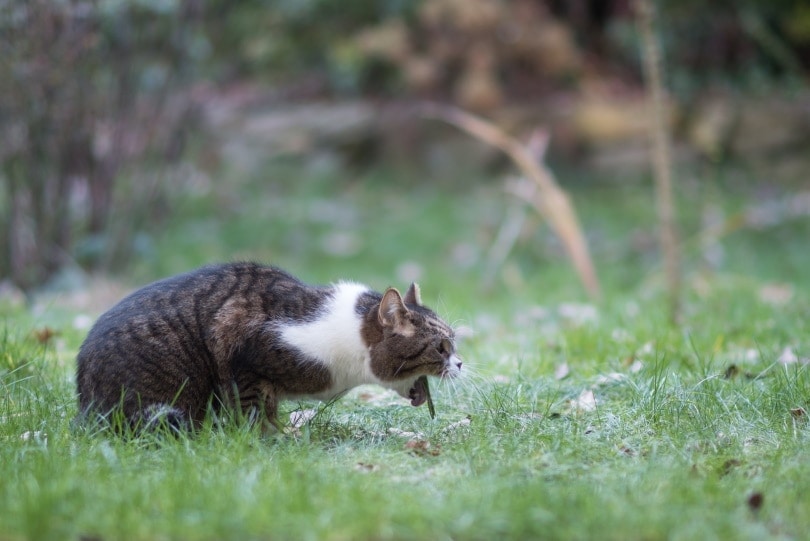
What Insects are Dangerous to Your Cat?
While dragonflies don’t pose much of a threat to your cat, there are several types of creepy crawlies your cat will enjoy hunting that they should stay away from. Not all of these creatures will cause severe reactions but their bites, stings, or hard exoskeleton can often cause your cat discomfort.
- Poisonous spiders
- Wasps
- Bees
- Some exotic caterpillars and moths
- Large centipedes
- Scorpions
- Fire ants
- Roaches
- Beetles
Now that you know what you can safely feed your cat, it’s just as important to find a bowl that supports their health and well-being. With whisker-friendly bowls and a wide tray to catch any spills, our Hepper NomNom Cat Bowl is our favorite option.
Final Thoughts
Cats chase dragonflies because the bright colors and quick movements are perfect ways to capture their attention. While we might think the game is strange and we certainly wouldn’t eat the dragonflies if we were inclined to catch them, our felines both enjoy the hunt and the tasty snack at the end.
Despite how big some of them can get, dragonflies are harmless to both us and our cats. They can’t sting, they aren’t poisonous, and their bite isn’t strong enough to break your cat’s skin. Even the few parasites dragonflies and other insects can carry are rarely anything to worry about.
Next time you find your kitty gnawing on a dragonfly, or any other insect, don’t panic. Instead, congratulate them on a job well done. Their hunting instincts and skills in catching these fast-flying insects deserve a round of applause.
Related Read:
Featured Image Credit: Piqsels



